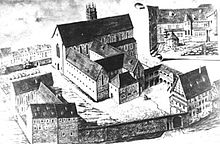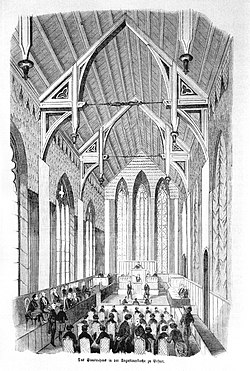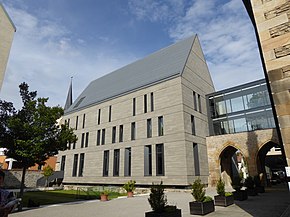
Erfurt is the capital and largest city of the Central German state of Thuringia. It is in the wide valley of the River Gera, in the southern part of the Thuringian Basin, north of the Thuringian Forest, and in the middle of a line of the six largest Thuringian cities, stretching from Eisenach in the west, via Gotha, Erfurt, Weimar and Jena, to Gera in the east, close to the geographic centre of Germany. Erfurt is 100 km (62 mi) south-west of Leipzig, 250 km (155 mi) north-east of Frankfurt, 300 km (186 mi) south-west of Berlin and 400 km (249 mi) north of Munich.

Katharina von Bora, after her wedding Katharina Luther, also referred to as "die Lutherin", was the wife of the German reformer Martin Luther and a seminal figure of the Protestant Reformation. Although little is known about her, she is often considered to have been important to the Reformation, her marriage setting a precedent for Protestant family life and clerical marriage.

Andreas Rudolph Bodenstein von Karlstadt, better known as Andreas Karlstadt, Andreas Carlstadt or Karolostadt, in Latin, Carolstadius, or simply as Andreas Bodenstein, was a German Protestant theologian, University of Wittenberg chancellor, a contemporary of Martin Luther and a reformer of the early Reformation.
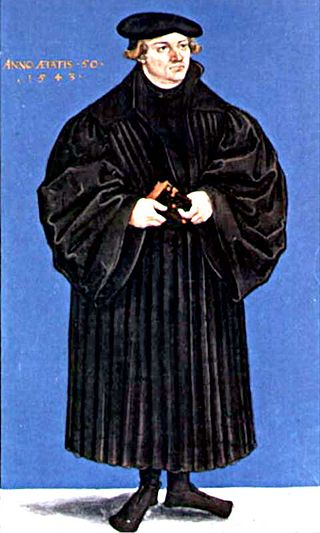
Justus Jonas, the Elder, or simply Justus Jonas, was a German Lutheran theologian and reformer. He was a Jurist, Professor and Hymn writer. He is best known for his translations of the writings of Martin Luther and Philipp Melanchthon. He accompanied Martin Luther in his final moments.

Georg(e) Spalatin was the pseudonym taken by Georg Burkhardt, a German humanist, theologian, reformer, secretary of the Saxon Elector Frederick the Wise, as well as an important figure in the history of the Reformation.
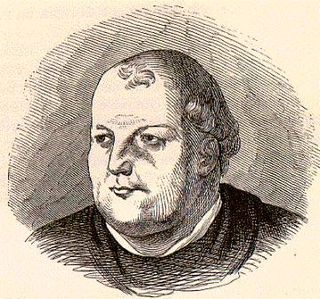
Johann von Staupitz was a German Catholic priest and theologian, university preacher, and Vicar General of the Augustinian friars in Germany, who supervised Martin Luther during a critical period in his spiritual life. Martin Luther himself remarked, "If it had not been for Dr. Staupitz, I should have sunk in hell." Although he remained Catholic, died as a Benedictine monk and had repudiated the Reformation, he is commemorated on 8 November as a priest in the Calendar of Saints of the Lutheran Church–Missouri Synod.
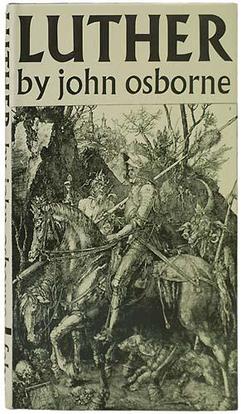
Luther is a 1961 play by John Osborne depicting the life of Martin Luther, one of the foremost instigators of the Protestant Reformation. Albert Finney created the role of Luther, which he performed with the English Stage Company at the Theatre Royal, Nottingham, the Théâtre Sarah Bernhardt, Paris, the Holland Festival, the Royal Court Theatre, London, the Phoenix Theatre, London, and the St. James Theatre, New York.
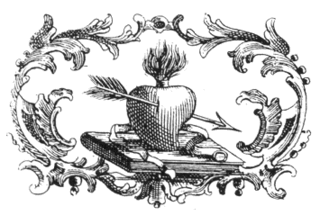
The Order of Saint Augustine, abbreviated OSA, is a religious mendicant order of the Catholic Church. It was founded in 1244 by bringing together several eremitical groups in the Tuscany region who were following the Rule of Saint Augustine, written by Saint Augustine of Hippo in the fifth century.
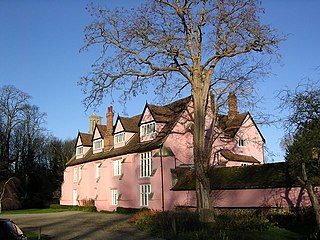
Clare Priory is a religious house in England, originally established in 1248 as the first house of the Augustinian Friars in England. It is situated on the banks of the River Stour, a short distance away from the medieval village of Clare, Suffolk. The friary was suppressed in 1538 and the property passed through many hands until it was again purchased by the Augustinian friars in 1953. Today the Priory offers modern retreat facilities for guests.

Erfurt Cathedral, also known as St Mary's Cathedral, is the largest and oldest church building in the Thuringian city of Erfurt, central Germany. It is the episcopal seat of the Roman Catholic Diocese of Erfurt. The cathedral was mainly built in the International Gothic style and is located on a hillside overlooking the main town square, directly next to St Severus' Church. As a unique architectural ensemble, both churches together form the city's landmark. Former German names include Marienkirche and Propsteikirche Beatae Mariae Virginis.
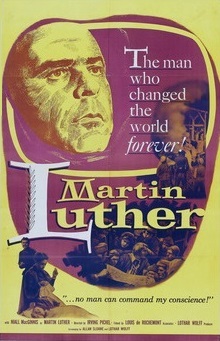
Martin Luther is a 1953 American–West German film biography of Martin Luther. It was directed by Irving Pichel,, and stars Niall MacGinnis as Luther. It was produced by Louis de Rochemont and RD-DR Corporation in collaboration with Lutheran Church Productions and Luther-Film-G.M.B.H.

Luther is a 2003 historical drama film dramatizing the life of Protestant Christian reformer Martin Luther. It is directed by Eric Till and stars Joseph Fiennes in the title role. Alfred Molina, Jonathan Firth, Claire Cox, Bruno Ganz, and Sir Peter Ustinov co-star. The film covers Luther's life from his becoming a friar in 1505, to his trial before the Diet of Augsburg in 1530. The American-German co-production was partially funded by Thrivent Financial for Lutherans, a Christian financial services company.
Communität Casteller Ring (CCR) is a Religious order for women in the Evangelical Lutheran Church in Bavaria.

The Lutherhaus is a writer's house museum in Lutherstadt Wittenberg, Germany. Originally built in 1504 as part of the University of Wittenberg, the building was the home of Martin Luther for most of his adult life and a significant location in the history of the Protestant Reformation. Luther was living here when he wrote his 95 Theses.

Christian Beyer was a Saxon Chancellor, international lawyer and Protestant reformer. In documents partially different names and spellings can be found.
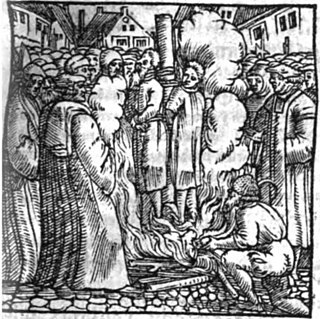
Jan van Essen and Hendrik Vos or Voes, were the first two Lutherans executed by the Council of Brabant for their adherence to Reformation doctrine. They were burned at the stake in Brussels on 1 July 1523.

The Erfurt Enchiridion is the second Lutheran hymnal. It appeared in 1524 in Erfurt in two competing editions. One of them contains 26 songs, the other 25, 18 of them by Martin Luther, others by Elisabeth Cruciger, Erhard Hegenwald, Justus Jonas and Paul Speratus. While the songs of the Enchiridion could be used in churches, they were intended primarily for singing elsewhere, such as at home, at court, and in guild meetings.

The Augustinian Friary of the Most Holy Trinity was an Augustinian Roman Catholic Priory, founded c. 1259, by the family of Talbot on the south bank of the river, in what is now Crow Street, Dublin. At the time the priory was built, it was just outside the city walls. The Friary most likely followed the design of the parent priory Clare Priory in the town of Clare, Suffolk (England). The Friary was suppressed in 1540 when it was described as a "church with belfry, a hall and dormitory". The friars continued to operate in secret within the city. and there are several mentions of them in the city archives until the late 1700s when they consecrated a new church.

A Lutherstadt is a city German protestant reformer Martin Luther visited or played an important role in. Two cities, Lutherstadt Eisleben and Lutherstadt Wittenberg, have "Lutherstadt" in their official names, while Mansfeld-Lutherstadt is the unofficial name of a district in Mansfeld. These three places which were important in Luther's life were awarded the "European Heritage Label".
Käthe Menzel-Jordan is a German architect and preservationist. As of 2021, she is the oldest member of the Thuringian Chamber of Architects and lives in Erfurt.




